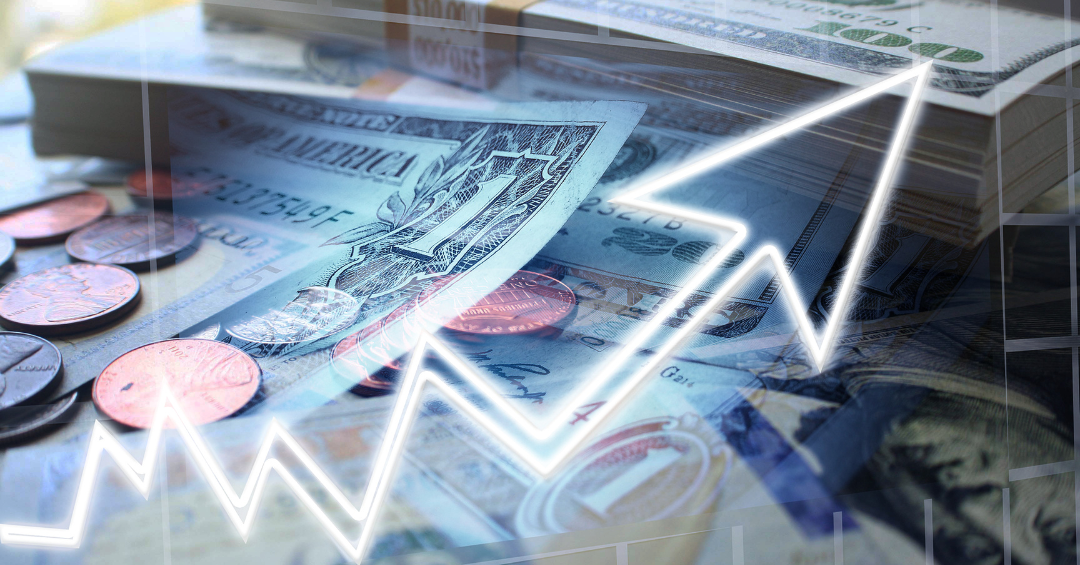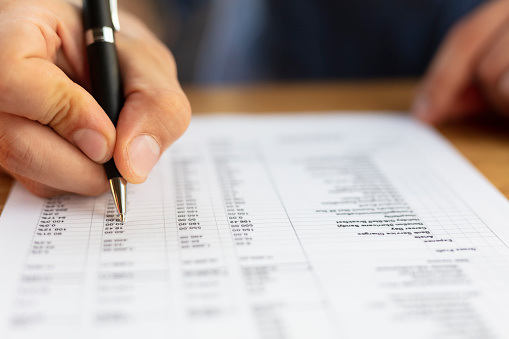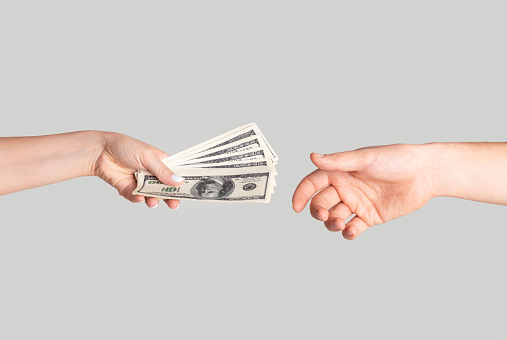
Important Dividend Dates
To understand dividend-paying stocks, the knowledge of essential dividend dates is crucial.
To understand dividend-paying stocks, the knowledge of essential dividend dates is crucial. The dividend typically comes in the form of a cash distribution that is paid from the company's earnings to investors. A dividend is the distribution of corporate surplus among eligible shareholders.

A company's board of directors determines dividend payments and amounts. Publicly listed companies make dividend payments to reward investors for investing their money into the firm's venture. A proportional increase or decrease generally follows announcements of dividend payouts in a company's stock price.
Many companies do not declare dividends and instead opt for retained earnings to invest back into the company.
Once the record date is declared, the ex-dividend date is set based on stock exchange rules. This date is usually set to one business day before the record date.
An investor will not receive the next dividend payment if you purchase a stock on its ex-dividend date or after. Instead, the seller gets the dividend. If an investor purchases before the ex-dividend date, you get the dividend.
What are the Important Dividend Dates?
Dividend payments are preceded by a protocol and conveniently distributed among four dates. These events happen in chronological order.
1. Declaration Date
The declaration date is also known as the announcement date. It is the day a company announces its intention to pay dividends to its shareholders. The board of directors sets forth the dividend proposal, which is declared in an annual general meeting (AGM).

In the announcement, the company mentions the date on which it will make such payments and the amounts of dividend it will disburse, expressed either in currency denomination or percentage. Finally, a declaration statement is issued, including details such as the size of the dividend, the record date, and the payment date.
Most investors consider the declaration date the least important because it is only a way of communicating information rather than a date on which any impact will occur.
When a company has declared a dividend, it sets a record date when the investor must be on the company's books as a shareholder to receive the dividend.
Companies also use this date to determine whom to send financial reports, proxy statements, and other information.
2. Ex-Dividend Date
This date for a share is the business day before the record date of declaring dividends for eligible shareholders for the payout.

This means that investors who buy the stock on this date or later will not be eligible for dividends announced by the company on or before the record date. These dates can be a deadline for prospective shareholders who wish to receive the dividend payment.
Example: Suppose investors purchase a company's stock after the ex-dividend date. In that case, they will not be eligible to receive a dividend payment, which will be paid to the seller.
Importance:
- The ex-dividend holds superlative importance to an organization's shareholders and investors.
- The announcement of a dividend creates a higher demand for that share.
- This demand for security rises to its peak immediately before the ex-dividend date; thus, the share price also increases.
- Investors might not benefit from the transaction if they choose to invest in stocks right before this date.
- However, this will occur if a rise in share prices is equivalent to a dividend rate higher than that.
- Furthermore, prices of stocks will fall on and post this date. Thus, such investors will not be able to realize capital gains from its sale.
- Hence individuals shall consider their investment objectives and the economy of a transaction before purchasing or selling stocks before their said date.
3. Record Date
When any company declares a dividend, it sets various dates, including a record date. The record date is a date by which you must be on its books as a shareholder to receive the dividend.

Companies also use this date to determine when to send proxy statements, financial reports, and other information. It is a day when a company determines shareholders' eligibility to receive the announced dividend payment. Investors who purchase a share on the record dates will not be entitled to receive dividends.
It generally takes T+2 days, i.e., two business days, for stocks to be delivered and reflected in company shareholders' records. Therefore, shareholders' names that appear on a company's record at the end of the record date will be considered for dividend payment.
Difference between the ex-dividend date and the record date
The ex-dividend date is when the cutoff point for a pending stock dividend happens.
Suppose a shareholder has bought a stock one day before the ex-dividend date. In that case, they will be eligible to get the dividend amount. However, if the stock is purchased on the ex-dividend date or after the ex-dividend date, in that case, the shareholder won't be eligible to receive the dividend.
Furthermore, suppose a shareholder wants to receive the dividend and still sell the shares. In that case, they can only sell the stocks after the ex-dividend date. On the other hand, the record date is when the company identifies and lists all the current shareholders.
This day determines the individuals who are eligible to receive the dividend amount. Therefore, if you are not holding the shares on this date, you will not receive the announced dividends.
4. Payment Date
The payment date is the actual date when the shareholders who are in the company's record as on the ex-dividend date receive their dividends.

It is often a few weeks after the ex-date has occurred and is the final stage in the dividend payment process.
On this date, the dividend is deposited in the shareholders' account. The payment date is always a working day, and public holidays and weekends are excluded. The company will usually issue the payment directly to the broker serving the stockholder instead of the shareholder.
The dividend will then be credited to the respective shareholder's account.
Dividends are generally paid in cash but can also be paid in stock or both. The most preferred payment of a dividend is in cash. Analysts and investors watch the stock price on the payment date to see if the cash disbursal impacts the company's perceived financial stability.
The utilization of unclaimed dividends varies by country as each country has a different law governing them. For example, some might claim retained earnings, while some distribute them to the Investor Education and Protection Fund.
Example
Let's understand it with the help of a hypothetical example.

Company ABC announced on 7th June to payout a 5% dividend on its stocks worth $10 per share. It subsequently announced the record date on 21st June.
Let's look at this table of dates associated with dividend distribution as put forth by company ABC.
| Announcement date | 7th June 2022 |
| Ex-dividend date | 19th June 2022 |
| Record date | 21st June 2022 |
| Payment date | 31st June 2022 |
Therefore, investors willing to purchase ABC stocks to earn dividends on 31st June shall do so by the end of 19th June to appear in its shareholders' record as of 21st June.
If an investor purchases its stocks on 20th June, their name will appear in ABC's record on 22nd June and thus will not be considered for dividend payout on 31st June.
FAQs
Yes, any company can declare a dividend as long as they generate profit.
The board of directors of a company declare the dividends.
They are usually declared in the Annual General Meetings (AGM) or Board meetings
Dividends are generally paid in cash but can also be paid in stock or both.
Yes, there is a minimum time limit to receiving the dividend from the declaration date. The time limit varies from country to country.
No, dividends can be given out of:
- A current year or previous year's profits of the Company.
- Out of the realized Capital profits of the company.
- Companies may pay dividends out of reserves.
- Out of free reserves of the company.
The time limit varies from country to country. You can claim a dividend within 3 years of the dividend declaration/announcement date in the USA. In India, you can claim a dividend within 7 years of the dividend declaration/announcement date
The utilization of unclaimed dividends varies by country as each country has a different law governing them. Some might claim them as retained earnings, while some distribute them to the Investor Education and Protection Fund.
The days mentioned are working business days and do not include holidays.
No, It is up to the company to decide on dividend declaration based on their vision. Suppose a company is planning to maximize shareholders' wealth.
In that case, they may declare a dividend, and if the company is planning to reduce debt or increase savings, they may opt for retained earnings.
Yes, the company is more inclined to preference shareholders and prioritizes them over ordinary shareholders in dividend payout. Also, preference shares receive a fixed dividend, and the dividend rate is higher than ordinary shares.

Everything You Need To Break into Private Equity
Sign Up to The Insider's Guide on How to Land the Most Prestigious Buyside Roles on Wall Street.
Researched and authored by Rohan Kumar Singh | LinkedIn
Free Resources
To continue learning and advancing your career, check out these additional helpful WSO resources:


or Want to Sign up with your social account?